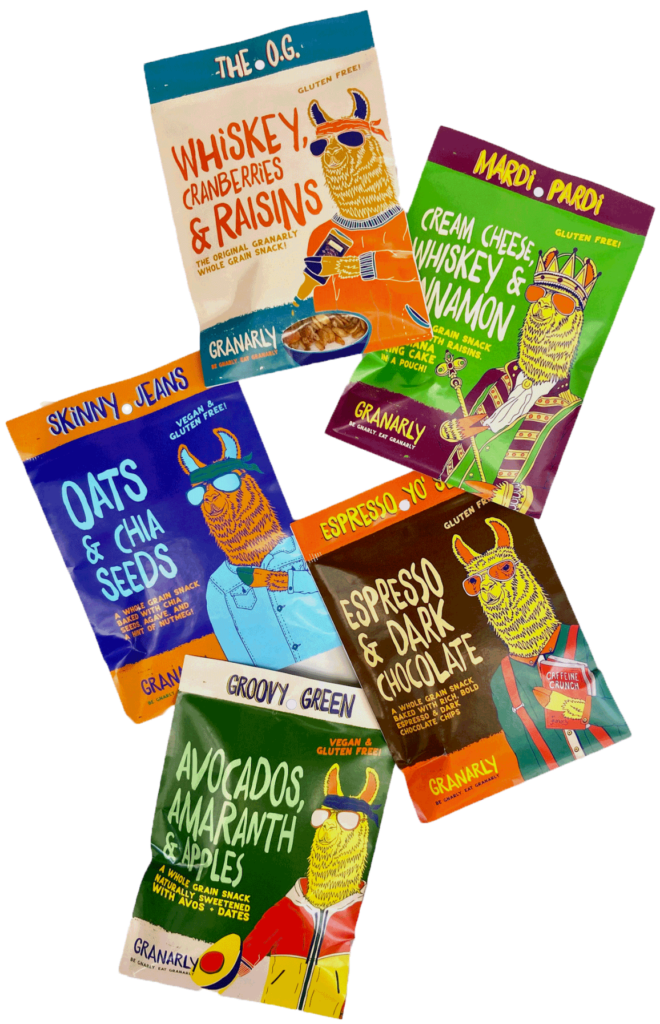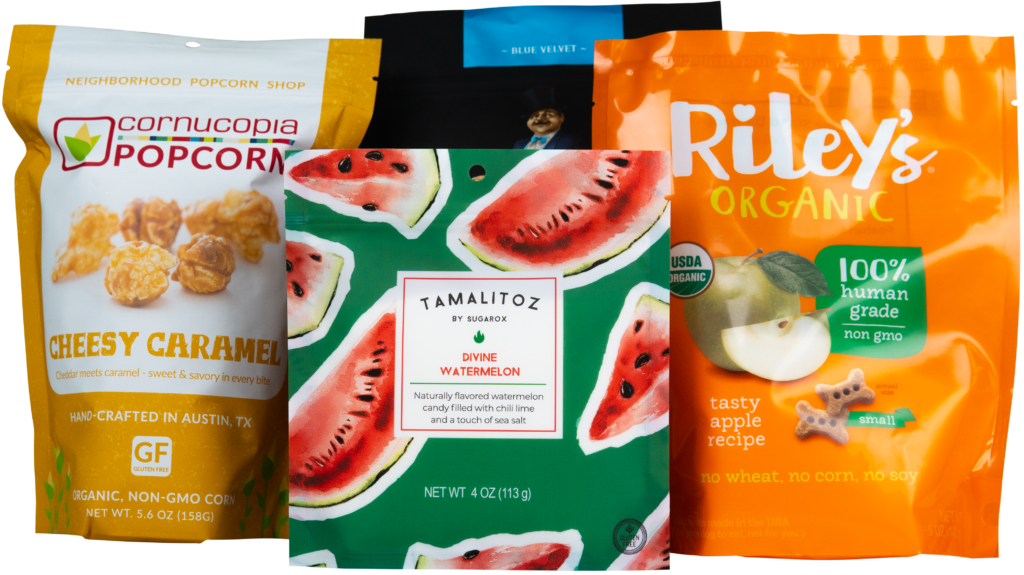Make your way down just about any aisle at your local grocery store or Whole Foods, and you’ll find it bursting with a variety of package structures. Boxes of cereal, bags of chips, pouches of granola, cartons of milk, jars of peanut butter. These more traditional packaging structures are what we have come to know and expect with certain products.
But things on the aisle are shifting. As more consumers share their concerns for the environment and as more brands respond, while also trying to differentiate themselves from their competitors, we’re seeing more innovative and sustainable packaging, such as flexible food packaging. Ketchup in an inverted stand-up pouch. Nut butter and oils in individual serving size pouches. Shampoo in travel-size pouches. Soup and broth in a resealable stand-up pouch.
Flexible packaging, due to its convenient shape, ease of use, resealable properties, lightweight, and overall environmental impact compared to its rigid counterparts, is making its way into the spotlight more and more, taking its place as the future of packaging. In fact, according to the 2019 Flexible Packaging Marketing Assessment by PMMI, The Association for Packaging and Processing Technologies, “flexible packaging accounts for 19 percent of the overall packaging market and is expected to grow at a rate of 3.9 percent CAGR by 2023.” PMMI’s assessment also states that “convenient packaging, sustainable materials, excellent barrier properties, and growing customer base for fast-moving consumer products and consumer durables in emerging countries are driving this expansion.”
More and more consumer packaged goods brands (CPGs) are finding that using flexible packaging helps their product stand out from the competition, resulting in more consumer interest and ultimately, purchases. An added bonus is that brands that adopt flexible into their line-ups find that these products are easier to store, display, ship and handle!
There are a plethora of reasons why we think flexible packaging is becoming the future package of choice of CPGs, but we narrowed these reasons down to the top 5. Let’s dive into why the future is flexible:
Convenience and Portability
Consumers’ lives don’t seem to be slowing down anytime soon. The fast-paced lifestyle is shifting the way brand owners approach not only their products but also how they package their products.
As a brand owner, you know the importance of meeting your customers where they’re at; and you can do so by putting your products in packaging that makes its contents easy to grab and easy to eat. Convenience is one of the major factors contributing to the rise in the popularity of flexible packaging. In fact, the Flexible Packaging Association reports that consumers value flexible packaging because it is so easy to store, easy to open and its ability to reseal.
The lightweight nature of flexible packaging also makes it a better choice for on-the-go consumption over rigid plastic or glass. The unbreakable quality of flexible means that the product is safe when handling and even when dropped, which makes it perfect for consumers to pack in their purse, backpack or even in a pocket. Also with many offerings in single-serve flexible packages, consumption and clean-up are a breeze. Consumers want their packaging to save them time and energy, and flexible packaging delivers.
Extended Shelf Life
An often overlooked benefit of plastic is its ability to cut down on food waste, another global environmental issue that we’re facing. Though plastic pollution has gotten a lot of not-so-positive attention, plastic packaging for food can actually help the environment by cutting down on food waste. Couple that with the fact that flexible packaging has a much smaller carbon footprint and overall impact on the environment, and the pouch reigns.
With high-barrier films, and airtight seals, highly perishable products, like jerky and cheese, are kept safe from oxygen and moisture. This keeps the product fresher for longer, which means less food ends up in the landfill. The reseal technology of flexible packaging also ensures that the food item maintains its freshness over several uses. Fresher product means less thrown away by the consumer and stores, due to spoilage. This works in all markets from cereal to nuts, as well as fresh foods like fruits and vegetables, all to keep food items fresher longer.
Transportation and Storage
Flexible’s lightweight property aids in reducing the number of truckloads to ship, not to mention reducing storage space when compared to products packaged in rigid counterparts. For example, juice packaged in flexible weighs far less and takes up less space than that same juice packaged in glass bottles. Less weight and less space mean less gas needed for shipping, which means a smaller carbon footprint.
Storage space on and off the shelf also plays into why brands are shifting to flexible packaging. Unfilled pouches take up far less space in a warehouse facility than glass jars, cans or boxes, and filled pouches take up less space on the valuable shelf.
Design Capabilities
Flexible packaging allows for high-quality and high-impact graphics in 360-degree branding that delivers bright and clear designs, all of which play a part in enhancing the brand image. The outstanding design capabilities have allowed flexible packaging to stand out in crowded markets by capturing consumer attention.
Brand owners who are looking to enhance the overall image of their brand can do so through their packaging design. With flexible packaging, especially when produced with digital print technology, picture-quality graphics on premium films allows brands to meet and surpass their imaging goals.
Digital Printing
Gone are the days where you need to wait weeks, if not months, for your packaging. In the fast-paced, on-demand culture that we’re living in, flexible packaging printing means getting your packaging quickly, which can be the difference between landing a new retailer or fulfilling an influx of orders.
With digital printing on flexible packaging, you have the ability to get all of your runs — short or long – in a matter of days, rather than weeks. This helps to not only alleviate inventory space and cost concerns, but also gets your product to market quickly. You also will have faster set-up, and flexibility to make changes to the design quickly. It’s a win-win.
The Future is Now: Partner with a Flexible Packaging Company
Whether you’re an early adopter of the flexible pouch or considering the shift for your brand, it’s clear that flexible packaging is the future. Partnering with a flexible packaging company like ePac will make it possible to meet your customers where they’re at with convenient, sustainable, durable packaging. Give us a call at 844-623-8603 or request a free quote here to get connected with one of our flexible packaging experts.


